- Register
- Log in to Tune-In
- Wishlist (0)
-
Shopping cart
(0)
You have no items in your shopping cart.
Beatles News

You can go on all day talking about the various reasons why the music of The Beatles is so special. Some of it can just be credited to fate. For example, there was just something magical about the vocal blend of John Lennon and Paul McCartney, something that occurred naturally when the two men sang together.
George Harrison often added his wonderful harmonies to the mix as well. For this list, however, we’re concentrating on those songs where Lennon and McCartney’s vocal mix provided something extra special that no other band could hope to replicate.
“I Saw Her Standing There” from Please Please Me (1963)
Considering it’s the very first song on the very first Beatles’ UK album (Please Please Me), “I Saw Her Standing There” occupies a special place in Fab Four history. And right off the bat, we get an indication of what Lennon and McCartney could do on the mic together. Paul mostly wrote the song, so he gets to sing lead while also propelling the thrilling pace with his fast-fingered bass work. But the song really hits another level in the chorus when Macca’s higher vocal is met by the low harmonies of Lennon, providing a kind of inverse approximation of details

By 1974, three of the former Beatles had reached No. 1 on the charts in the U.S. as solo artists. George Harrison led the pack with “My Sweet Lord” in January of ’71. Months later, Paul McCartney followed with “Uncle Albert/Admiral Halsey” from his album with his wife Linda, Ram. Ringo Starr also earned a No. 1 for “Photograph” in 1973. The following year would be John Lennon’s turn at the top.
In ’74, Lennon released his fifth album Walls and Bridges, featuring Elton John on background vocals and organ on “Surprise, Surprise (Sweet Bird of Paradox)” and piano and harmony on “Whatever Gets You Thru the Night.” The song was inspired by late-night TV channel surfing while living with mistress May Pang following his 18-month separation from Yoko Ono in 1973 known as the “Lost Weekend.”
It was also the track John suggested Lennon release as his first single because he believed it would go to No. 1. John even bet Lennon that if it did top the charts, he’d have to perform it live with him on stage.
Upon its release on September 23, 1974, “Whatever Gets You Thru the Night,” topped the Billboard Hot 100 ch details

Sir Paul McCartney continued to put on a spectacular show as he took to the stage in Colombia as part of the South American leg of his Got Back Tour.
The Beatles star, 82, looked smart in a navy blue jacket and trousers, which he wore over a pale blue shirt with large sleeve cuffs. He sported a 5'0 clock shadow and tucked his silver locks neatly behind his ears.
As he sang a string of songs from his impressive back catalogue, including Love Me Do, Hey Jude and Live and Let Die - which was accompanied with impressive fireworks and other pyrotechnics - the renowned hitmaker could be seen flitting between the guitar and piano, all whilst never missing a note or chord.
At one point he was seen waving a huge Colombian flag to the adoring crowd at El Campin Stadium in Bogotá.
Fulfilling his promise to return to Colombia at his last show back in 2012 – to the delight of fans – Paul wrote on. his official website: 'Colombia, we are on our way! Our last visit to you was so special and felt like an unbeatable experience but we know this is going to be even bigger and better!
Sir Paul McCartney continued to put on a spectacular show as he took to the stage in Colombia as part of t details

This is George Harrison’s Resonet Futurama, it was his most-played guitar in the early days of the Beatles seeing extensive stage and studio use from 1959 to 1961 including at the legendary Cavern Club in England.
It’s well-known that George Harrison, and countless other budding rock stars in Britain at the time, wanted to buy a Fender Stratocaster. The issue was that there was a UK government embargo on foreign musical instrument imports in place, and Stratocasters were almost impossible to find.
The reason the Stratocaster was so popular was partly due to the fact that it was one of the most advanced electric guitars in the world at the time, and also due to the fact that Buddy Holly used one. In the 1950s there were relatively few male teenage guitar players who didn’t want to be Buddy Holly.
Harrison bought the Resonet Futurama, a Czechoslovakian guitar, from Frank Hessy’s music store in Liverpool on November 20th, 1959. It looked a little like the Stratocaster and even though he found it more difficult to play, he did like the tone it produced. He bought it on a payment plan with his mother as the guarantor.
Source: Ben Branch/silodrome.com
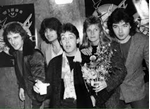
Rock and Roll Hall of Famer Denny Laine would've been 80 years old this week. To honor the late Wings and Moody Blues musician, some of his former bandmates just released a tribute single for his Wings song "Time to Hide."
Recorded under the band name McDonalds Farm, the single dropped on Laine's birthday Tuesday, Oct. 29. The video posted the following day on YouTube.
Laine's widow, Elizabeth Hines of Naples, says she suggested the song to Laine's friends and former bandmates. It was one of his favorites.
"It was one of those songs you don’t forget," Hines says. "It was a very popular song, because of Denny's harmonica and his vocals. It's great."
The video features footage of Laine performing with Wings and the band McDonalds Farm. Laine's friend and former bandmate, Paul McCartney, approved the use of the Wings footage through his company MPL Communications, according to a news release.
"This single is all about Denny," says Steve McDonald of McDonalds Farm. "We all approached the recording with affection, admiration and love for a dear friend and fellow road traveler."
The song was recorded at Seagate Studio Dundee in Scotland and produced by Graeme Watt (who also details

It’s no small secret that tension was building amongst the Fab Four in their final years as a band, and one could argue that no Beatle was more familiar with these feelings than George Harrison, who repeatedly butted heads with Paul McCartney and John Lennon for creative input. While the latter musicians’ compositions comprised most of the Beatles’ records, Harrison normally only got one song, if any, per album side.
Given this growing animosity, many listeners have speculated whether Harrison’s contribution to Side No. 4 of the Beatles’ eponymous album from 1968 included a not-so-subtle dig at McCartney. If there was a jab to be found, Harrison did an excellent job sugar-coating it—literally.
Each side of the Beatles’ “White Album” features one song that George Harrison wrote. Side No. 1 features Harrison’s melancholy ballad, “While My Guitar Gently Weeps.” Side No. 2 features “Piggies,” Side No. 3 closes with Harrison’s “Long, Long, Long,” and finally, Side No. 4 features an apparent candy-themed dig at Eric Clapton, “Savoy Truffle.”
Harrison and Clapton developed a close relationship details
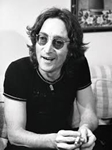
John Lennon's tragic comments about assassination revealed - 'They could get you in Disneyland'.
In new book We All Shine On – John, Yoko, & Me, confidant and helper Elliot Mintz reveals secrets about the couple after he befriended them as a radio host in 1972.
John Lennon shunned bodyguards in the lead-up to his death. The former Beatle was warned by friends that his relaxed attitude in New York City was dangerous – and he would tragically pay the ultimate price.
In 1976, Lennon said: “All my life, I’ve had guys around me who were supposed to be protecting me. When the group toured, there were hundreds of police but if they want to get you, they’re gonna get you. They could get you in Disneyland.
“Look at all the people that Kennedy had around him. I don’t need bodyguards. I don’t want them. I’m just a rock’n’roll singer. Even the thought of it makes me cringe.” Moments later, Lennon added: “I’ve never been afraid of death. To me, it’s just like getting out of one car and into another.”
Source: Mark Jefferies/mirror.co.uk

Ringo Starr was one-fourth of the most influential group in the history of rock music. His inimitable style, charm and drumming endeared him to legions of fans. He sang on a number of Beatles hits and deep album tracks. The one thing he rarely did in those years was write songs: Among Beatles tunes, only “Don’t Pass Me By” from The White Album and “Octopus’ Garden” (from Abbey Road) are credited to Ringo alone as composer.
But that didn’t stop the man born Richard Starkey from embarking upon a creatively fruitful post-Beatles solo career, one that continues to this day. On the occasion of the 50th anniversary of Ringo’s fifth album, 1975’s Goodnight Vienna, here are five classics that remind us what a fine pop star good old Ringo has always been.
“It Don’t Come Easy” (single, 1970)
The second song Ringo ever wrote would be his first solo single. Co-written by George Harrison (who isn’t credited), the song was recorded a few times before the session that yielded the finished version. An early mix from that session circulates among collectors; it features George on lead vocals instead of Ringo, and at one point backing vocalists details
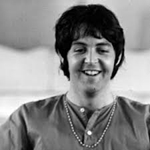
The Beatles might have spurred a sea change in rock and roll when they arrived on the scene, but they didn’t create their sound from complete scratch. They were a product of their influences: Chuck Berry, Buddy Holly, Fred Astaire …
Wait, Fred Astaire? Well, it’s partially true, at least when it comes to the White Album track “Honey Pie.” It’s a song where Paul McCartney indulged his love of classic Hollywood musicals, and didn’t even bother updating the sound for 1968. The Beatles never shied away from paying homage, sometimes pretty obviously, to the music that had a big impact on them. Obviously, the rock and roll that bubbled up in the late ‘50s cast a big spell on them, but that was not by any stretch the only genre that steered their artistic sensibilities.
It’s important to remember these four guys were all born in the early 1940s, and spent many years of their childhood listening to music far removed from rock and roll, in part because that genre hadn’t really been invented yet. That range of influences is part of what made their music so special.
When it came to “Honey Pie,” which appeared on the White Album in 1968 a details

The Beatles had a ton of fans, many of whom never had the chance to interact with the Fab Four other than to scream at them from a distance or fawn over them via a television screen. But there were a lucky, loyal few who had the opportunity to make the acquaintance of the group’s members and cross paths with them on a somewhat regular basis.
George Harrison immortalized these folks in the song “Apple Scruffs,” which is found on his classic 1970 triple album All Things Must Pass. It’s a charming, heartfelt performance by Harrison, dedicated with surprising affection to these intrepid fans.
Because he was generally allowed just one or two of the songs he wrote on any Beatles album, George Harrison found material piling up when he prepared to start his solo career. But that didn’t stop him from writing even more fresh songs for possible inclusion on All Things Must Pass. “Apple Scruffs” was one of those latecomers.
Even though The Beatles were deteriorating circa 1970, the four men still had business to conduct at Apple, the company they had formed with much fanfare a few years earlier. Harrison often groused about these requirements, especially as more details
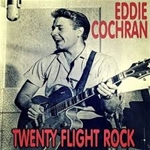
John Lennon might have been older, but Paul McCartney had more talent on guitar when the two met as teenagers in 1957. It was that talent that earned him Lennon’s respect and a spot in his skiffle group, the Quarrymen. And, as McCartney reveals in a 1999 interview, it was all due to one song.
It was July 6 of that year when their fateful meeting took place at St Peter's Church Hall fête in the Liverpool suburb of Woolton, where Lennon lived with his Aunt Mimi. McCartney only attended the event because of his mate Ivan Vaughan, who was a friend of Lennon’s.
“He used to be in one of the little skiffle groups that John was in,” McCartney told British TV host Michael Parkinson in a 1999 interview for his BBC talk show, Parkinson. “So he said you should come along to this thing. You know this group's playing, and my mate John's in it.”
The Quarrymen were a rough-and-tumble skiffle act consisting of Lennon and a group of musical friends from the Quarry Bank High School. McCartney and Vaughan arrived in time to catch the band's afternoon set and see Lennon sing “Come Go With Me,” by the Del Vikings. Lennon didn’t know the words and improvised them, whi details

Paul McCartney’s musical career is arguably the most decorated and triumphant of all time. So much so, that one doesn’t even have to look at his statistics or his song history to know that to be true. However, when one does look into his numbers, the magnitude of McCartney becomes even more amplified. Since entering the sphere of popular music with The Beatles in 1963, McCartney has had 32 No. 1 hits, 27 No. 1 albums, 25.5 million RIAA-certified units, and a plethora of accolades and awards.
Needless to say, there is a reason McCartney became one of music’s first billionaires. Furthermore, there is a reason he is often considered the most successful musician of all time. That being so, it seems when a musician needed a huge hit they would just call up McCartney. Although, it seems McCartney also just likes to collaborate. With these two notions in mind, here are three Paul McCartney collaborations that became huge hits.
“Ebony and Ivory”
Released in 1982, the song marked the first collaboration between McCartney and Stevie Wonder. Given the song’s star-studded cast, it was bound to be a hit from the very start. However, the song’s quality seemingly did a majority details
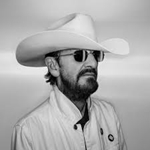
Ringo Starr has a secure place in music history as a member of the Beatles, but the legendary drummer and singer isn’t resting on his laurels.
Starr, 84, is releasing a country album, “Look Up,” on Jan. 10, 2025. The first single from the project, “Time On My Hands,” was released on Oct. 18, featuring Starr’s distinctive vocals. (Listen to the song in a lyric video below.)
Grammy winner T Bone Burnett, a roots music powerhouse, was Starr’s primary collaborator on the album, producing all 11 tracks and writing or co-writing most of them. It’s Starr’s first full-length album since 2019, and the followup to a 1970 record with strong country influences, “Beaucoups of Blues.”
“I’ve always loved country music,” Starr said via a press release. “And when I asked T Bone to write me a song, I didn’t even think at the time that it would be a country song — but of course it was, and it was so beautiful. I had been making EPs at the time and so I thought we would do a country EP — but when he brought me nine songs I knew we had to make an album. And I am so glad we did. I want to thank, and send Peace & Lov details

It’s a pretty big stretch to call any of The Beatles’ songs “underrated.” That being said, there are a few tracks here and there from the Fab Four’s discography that rarely get widespread praise. We think they’re worth a listen or two. Let’s take a look at four of the most underrated songs by The Beatles!
The 1967 B-side to “All You Need Is Love” was obviously overshadowed by the hit it was released with. Still, “Baby You’re A Rich Man” deserves more love than it has gotten. It’s a fantastic mutual collaboration between John Lennon and Paul McCartney, with a psychedelic energy to it that stands out.
It’s loaded with effects, synth sounds, and a beefy chorus that you won’t find in many of the Fab Four’s other songs from that era. Allegedly, Mick Jagger of The Rolling Stones contributed some backing vocals to the track. Though, that’s never been confirmed.
Source: American Songwriter
details
John Lennon and Yoko Ono's relationship had many ups and downs. One of those downs was the time that Lennon had sex with another woman at a party while Yoko was able to hear them. This ended up in their break up, which eventually left Lennon feeling miserable. Thankfully, Paul McCartney was there for Lennon, which led to him reuniting with Yoko years after their breakup.
This whole relationship drama was narrated by Elliot Mintz, a close friend of Lennon and Yoko's. Mintz talked about the couple's mishaps in his memoir, "We All Shine On: John, Yoko, and Me."
Described as "loud, raucous sex," the whole breakup was triggered after Lennon's infidelity with a woman during a Jerry Rubin party in 1972. "Throughout it all, Yoko sat on the sofa, in stunned, mortified silence, as other guests began awkwardly getting up to leave — until they realized that their coats were in the bedroom where John was having sex," Mintz wrote, according to Fox News.
From New York To Los Angeles
After Lennon's infidelity, he started a relationship with May Pang in 1973. While Mintz believes Yoko never arranged the relationship, Pang has stated that Yoko "took advantage" of her and set the whole thing up. Lennon and Pang details
